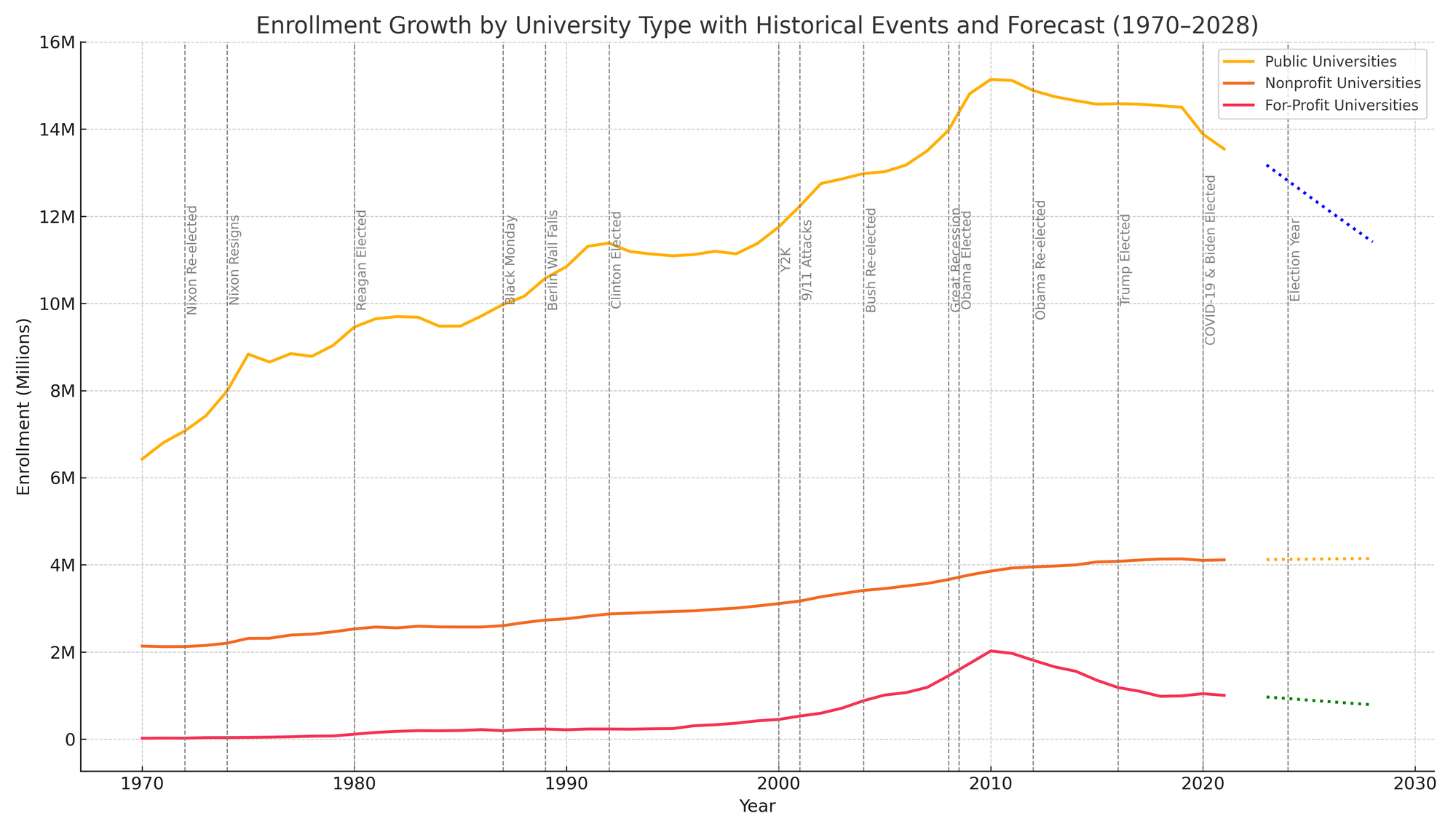🎢 The Enrollment Rollercoaster: Who’s Up, Who’s Doomed, and Who’s Just Coasting

We plotted the numbers. Then we stared at them. Then we muttered, “Yikes.”
The chart below tells the tale: from 1970 to 2022, U.S. college enrollment was like a buffet plate at Golden Corral—always room for more. Public universities led the charge, piling on students year after year. Private nonprofits followed like cautious middle children. For-profits… well, they sprinted in like they’d discovered a cheat code, only to get caught and tumble hard.
But now? The buffet’s closing early, and the crowd’s thinning.
📊 The Graph That Says It All

This graph doesn’t just show numbers—it shows trouble. Forecasts using advanced trend modeling (Holt-Winters, for you data nerds) reveal just how steep the road ahead is for every sector. Some are slowing. Others are stalling. One is already face-down in the ditch.
🧠 What the Data Tells Us
- Public Universities
Once unstoppable. Now, they're coasting on momentum. Enrollment growth peaked around 2010 and has since flatlined. Without action, some systems may crumble under their own weight. - For-Profit Colleges
Their rise was meteoric—and so was their collapse. After peaking in the post-recession years, scandals and regulatory smackdowns took the wind out of their sails. The forecast? Continued obscurity. - Private Nonprofit Universities
The dependable middle child. Growth has been slow but steady—until now. With no state funding and increasingly price-sensitive students, their margin for error is razor thin.
🔮 The Cliff Is Coming. Who’s Wearing a Parachute?
The first major jolt from the Enrollment Cliff is expected to hit between 2026 and 2028. Here’s what we think will happen:
- Public university systems will start bleeding students. State budgets will wobble. Panic will ensue.
- In a desperate attempt to stabilize their largest public institutions, legislators will offer massive tuition subsidies—or even free tuition—to state universities.
- Private institutions? Not part of that plan.
And here’s the kicker:
These subsidies will function like an economic torpedo. They’ll keep public universities afloat… while sinking dozens, if not hundreds, of small private colleges.
Private institutions with large fixed costs, aging infrastructure, and tuition-dependent models will face the impossible math of trying to compete with “free.” Some will downsize. Some will merge. Most will fade quietly into obituaries with phrases like “founded in 1889” and “rebranded as a leadership academy.”
🧬 What’s Next on the Deathpool?
You’ve seen the big picture—but the real fun starts when we zoom in.
Stay tuned for the rollout of Tier 2 access on UniversityDeathpool.com:
- 🔍 Drill into university-specific data
- 📈 View detailed breakdowns of market saturation, academic efficiency, and financial health
- 📥 Download CSVs to nerd out on your own terms
It’s like pulling back the curtain on higher ed’s actuarial table—and we’re making it easier (and darker) than ever.
Until then, keep refreshing your alma mater’s homepage. If that “important announcement” banner shows up, well… we’ve got a map for that.
🪦